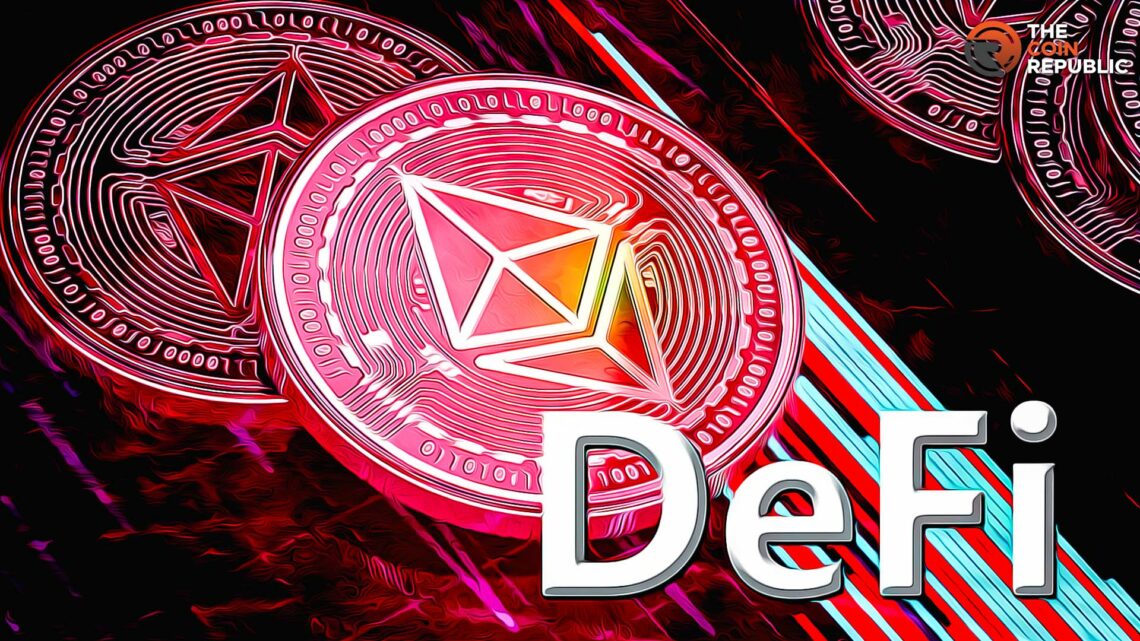- 1 EigenLayer rolled out staking protocol on Ethereum mainnet.
- 2 The Defi protocol raised $64.5 Million in funding in March 2023.
EigenLayer, a Seattle-based Decentralized Finance (DeFi) platform, announced the deployment of its staking protocol on the Ethereum mainnet. Ethereum released its Shapella Upgrade on April 12, 2023, allowing un-staking of Ether. The investors who staked 32 ETH to become validators could not withdraw their money, and the upgrade allowed them to gain rewards from this staking mechanism.
We are thrilled to announce the deployment of the Stage-1 EigenLayer protocol on Ethereum Mainnet!
— EigenLayer (@eigenlayer) June 14, 2023
This marks a significant milestone in our mission to create a permissionless environment for innovation.https://t.co/QZ529WsIAS pic.twitter.com/SYHexSRTA0
Re-staking Protocol Rolled out on Ethereum Mainnet
EigenLayer would allow ETH stakers to deposit select liquid staking tokens, including Rocket Pool ETH (rETH), Lido stETH (stETH), and Coinbase Wrapped Staked ETH (cbETH). In March 2023, EigenLabs, the developers behind EigenLayer, raised $64.5 million at the valuation of $500 million in a series of investment rounds, adding another $50 Million in a Series A funding round.
The parameters set by the DeFi protocol for liquid and native staking are set along with liquid re-staking acceptance of a maximum of 3,200 for each liquid re-staking token and a maximum limit of 32 tokens per deposit address. Native re-staking is scheduled to be paused with the limitation of 9,600 ETH reached on the protocol.
The concept of liquid staking has been gaining serious ground since the blockchain shifted from energy-intensive Proof-of-Work (PoW) consensus mechanism to a Proof-of-Stake (PoS) mechanism through a merge that occurred in September 2022. Data suggests that a total of $16.92 Billion ETH are currently staked on the top five liquid staking protocols.
The Upgrade Which Allowed Un-Staking
The Ethereum Shapella Upgrade was operationalized on April 12, 2023. The soft-fork event on the blockchain allowed the un-staking of nearly 4.4 Million ETH staked after the merge. Before the upgrade, analysts argued that this step would be devastating as it would result in a withdrawal influx, which would badly affect the price.
Contrary to speculations, the upgrade proved beneficial as most stakers steered away from dissolving their stake and preferred to earn passive income through staking. Moreover, developers were rooting for this to happen, as this is believed to be the main motive behind the upgrade.
Experts predict that the scenario shall only grow from here onwards, especially when deflationary forces come into play. The average waiting time for gaining yield from staking is roughly over a month. Still, the investors are lining up for it.
Data suggests that over 50,000 individuals want to become validators on the blockchain. Also, the current annualized yield for staking ETH is between 4% to 5%. This hints that the Ether owners are eager to become validators and enjoy dual benefits.
The Beacon Chain went live in December 2020, and since then, staking emerged as a passive source of income. However, following this, the stakers could not leverage any yield from the locked coins. Furthermore, the subsequent price drop caused most stakers to bear losses.
The upgrade facilitates the flexibility of withdrawing the staked ETH, preventing the fear of the amount being locked for an extended period. This scenario caused the deposits on the blockchain to surpass the withdrawals for the first time. Additionally, the investors now have a new avenue to earn apart from holding on to ETH and waiting for the price to surge.

Nancy J. Allen is a crypto enthusiast, with a major in macroeconomics and minor in business statistics. She believes that cryptocurrencies inspire people to be their own banks, and step aside from traditional monetary exchange systems. She is also intrigued by blockchain technology and its functioning. She frequently researches, and posts content on the top altcoins, their theoretical working principles and technical price predictions.


 Home
Home News
News







